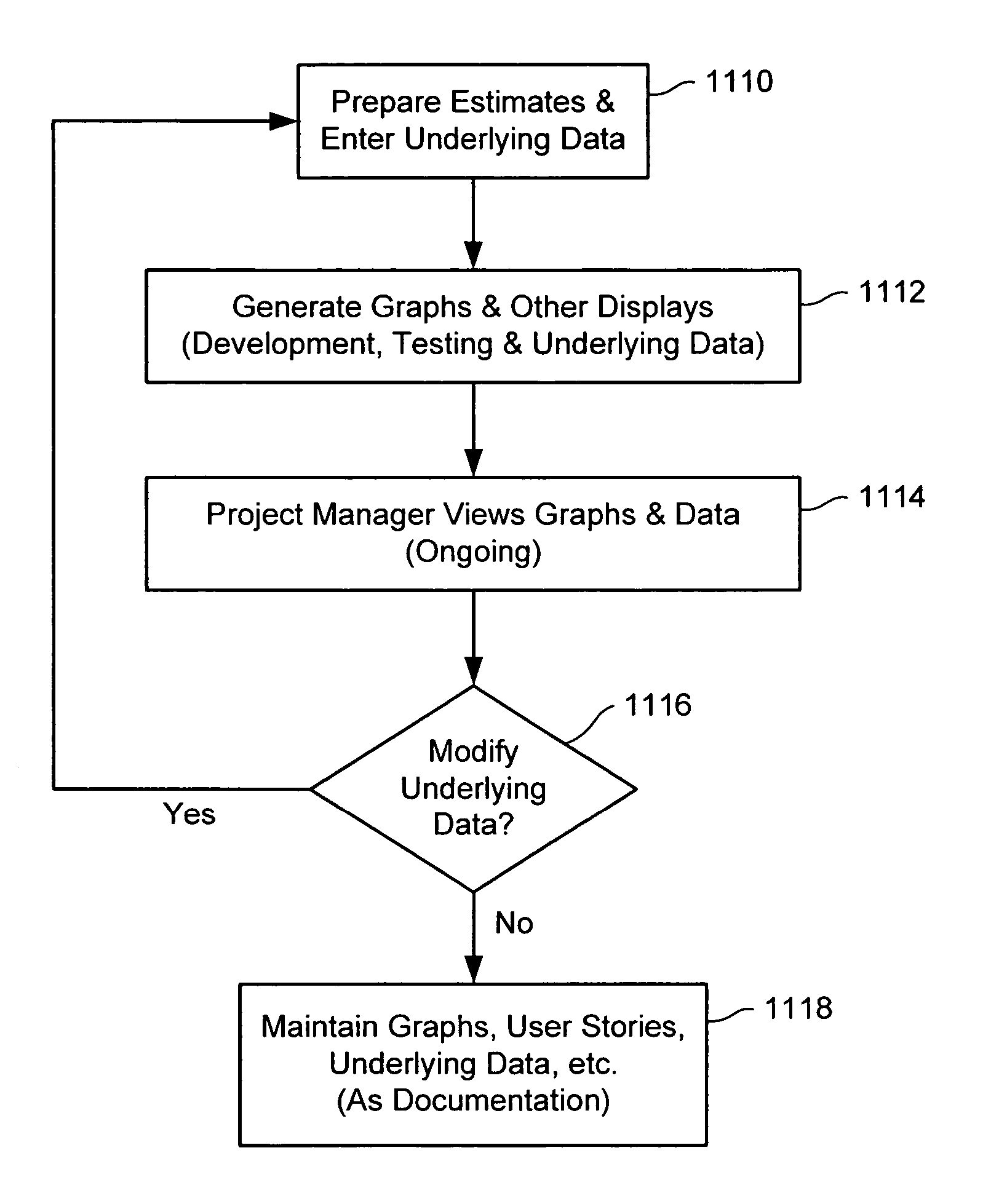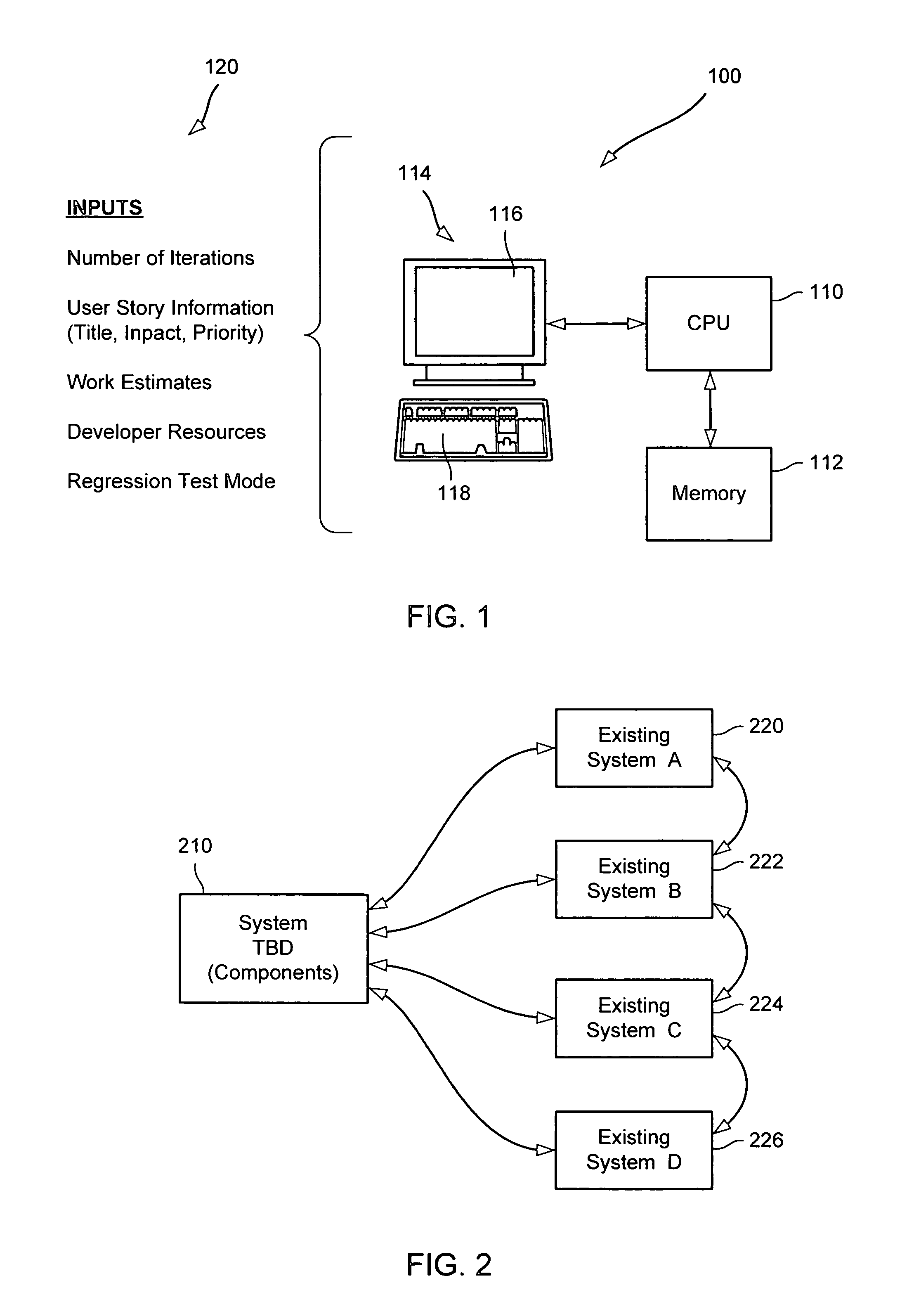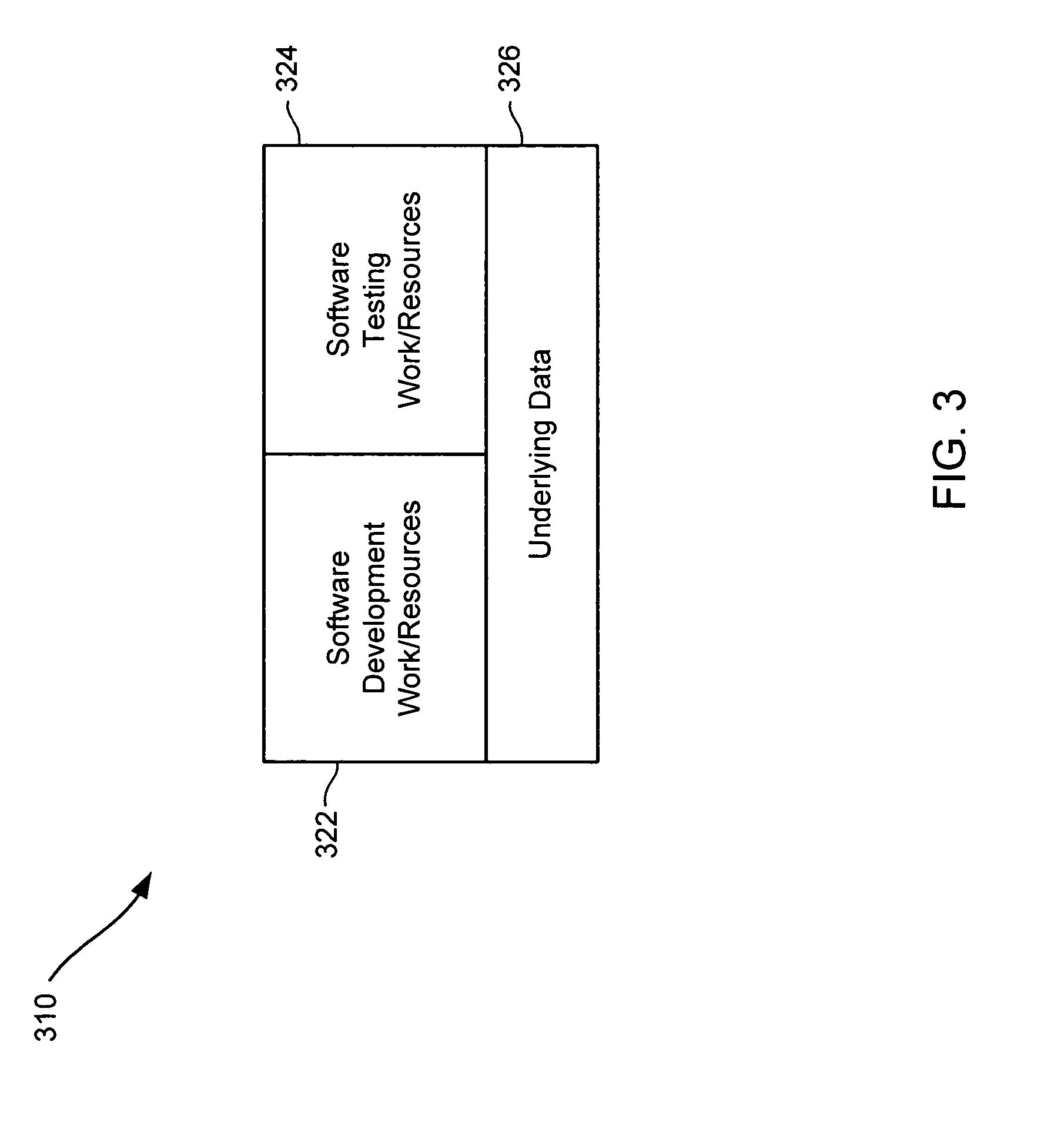System development planning tool
a system development and planning tool technology, applied in the field of system development planning tools, can solve the problems of time-consuming and difficult to complete the development of complex software systems, customers often do not have a firm idea of all their requirements, and frustration for both software developers and their customers
- Summary
- Abstract
- Description
- Claims
- Application Information
AI Technical Summary
Benefits of technology
Problems solved by technology
Method used
Image
Examples
Embodiment Construction
[0016]There are various embodiments and configurations for implementing the present invention. On such implementation is shown in FIG. 1, where according to an embodiment of the invention, a system 100 is programmed to operate as a tool for use in the planning or management of a software development project. The system 100 includes a CPU 110 that executes software programs implementing the project management process, a memory 112 for storing data and programs used in the process, and a user interface 114 (illustrated as a PC monitor or display screen 116 and an associated keyboard 118) for enabling a user (project manager) to plan and manage the development project.
[0017]As illustrated in FIG. 1, various kinds of information 120 relating to the development project is entered by the project manager at the user interface 114. Such information (inputs) will be described in greater detail later, but as illustrated in FIG. 1 it includes:
[0018]Number of Iterations—The number of iterations...
PUM
 Login to View More
Login to View More Abstract
Description
Claims
Application Information
 Login to View More
Login to View More - R&D
- Intellectual Property
- Life Sciences
- Materials
- Tech Scout
- Unparalleled Data Quality
- Higher Quality Content
- 60% Fewer Hallucinations
Browse by: Latest US Patents, China's latest patents, Technical Efficacy Thesaurus, Application Domain, Technology Topic, Popular Technical Reports.
© 2025 PatSnap. All rights reserved.Legal|Privacy policy|Modern Slavery Act Transparency Statement|Sitemap|About US| Contact US: help@patsnap.com



